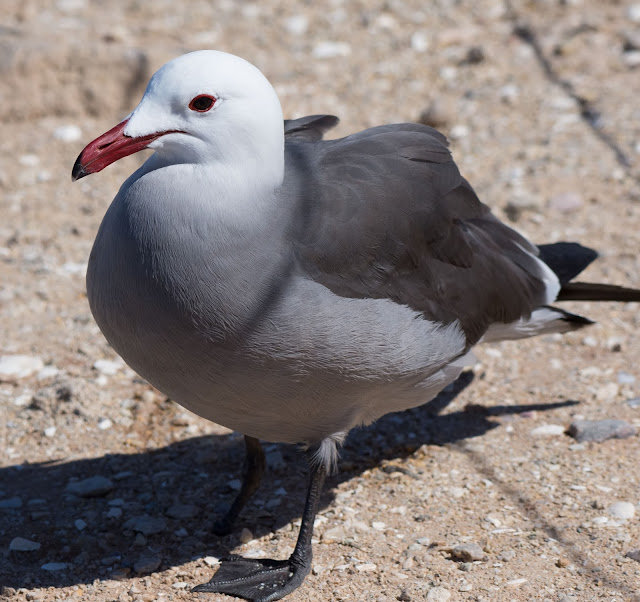Birding buddy, Chris Rohrer, and I had talked many times about making a trip to Puerto Peñasco, Mexico (most generally referred to Rocky Point, Mexico, by most gringos). This spot is a short 4 hour drive from the Phoenix metro area and is Arizona's closest access to any kind of an ocean beach. Puerto Peñasco is situated on the northeastern shore of the Sea of Cortez, (also known as the Gulf of California) and is only about a 1 hour drive from the Arizona/Mexico border. It is a popular tourist spot for Americans wanting to get away for a weekend. One does not even have to make any conversions of currency as everywhere in this resort will accept the US dollar. We rented a condo for 3 nights, which was located right on Sandy Beach with an awesome view of the ocean and pretty good access to Choya Bay and downtown Puerto Peñasco.
Since the first day was our arrival date, we were not going to have a full day of birding, so we were going to venture to to the Malecon or Pier area where the shops were located. But before we left the condo, we noticed some sparrows foraging on the lawns near the pool of the condo and quickly discovered they were Lincoln's Sparrows. This is a great sparrow and one of my favorites. We get them in the winter in Arizona, but usually they like the deep cover of brush piles. We were surprised by the number, (counted 8 at one time all in the same view on the grass), and of course we had to try for some photos since they seemed a bit less skittish in this surrounding.
Lincoln's Sparrow
Of course, Chris and I were there to do some birding instead of shopping, so off we went in the search of birds. As is the case in almost any dock/pier area with people and restaurants, many of the common birds were gulls. The most common gulls we had were Ring-billed and Heerman's Gulls, but mixed in were a few Yellow-footed Gulls and Western Gulls. The Yellow-footed is probably the most desired gull to find as it has a fairly limited range and is almost endemic to the coast line of the Sea of Cortez/Gulf of California. A few do make their way in the summer to the Salton Sea of California, but the habitat issues at the Salton Sea, might lead to fewer sightings in the future.
Yellow-footed Gull
Heerman's Gull
Heerman's Gull - Notice anything missing in this photo?
Western Gull
Hungry Heerman's Gulls feeding out of my hand.
Naturally Brown Pelicans are to be found just about everywhere one looks.
Brown Pelicans and gulls
Brown Pelicans
Eared Grebes abound in the ocean waters and the water is fairly clear allowing for great viewing.
Eared Grebe
Where ever there is water with fish, one can almost always be assured of finding an Osprey or two. In this location, with very few trees, the Osprey will take advantage of just about any tall object for nest building and the materials used are much more diverse than usual. They take advantage of anything they can find. Trees are few and far between as this area is one of the driest spots in Mexico, if not the driest.
Osprey sitting on nest.
Lots of other interesting things to photograph while exploring the city around the pier area. While walking around one of the hotels and its restaurant, we found a pair of caged Military Macaws. Once they knew we were watching them, they became very loud and boisterous, but sure were gorgeous to look at and it appeared they were being taken care of very nicely.
Military Macaw
Near the cage of the macaws we we found an amusing water fountain which was good for a couple of laughs.
Later back at the condo, while Chris and I were relaxing in the late afternoon, we got to witness some dolphins feeding out in the water and they had attracted several birds that got in on the feeding frenzy. Photos are not the best as it was out quite a ways from the condo, but fun to see anyway.
What a great beginning to a nice relaxing long weekend! More to come in 2 more posts.
























































